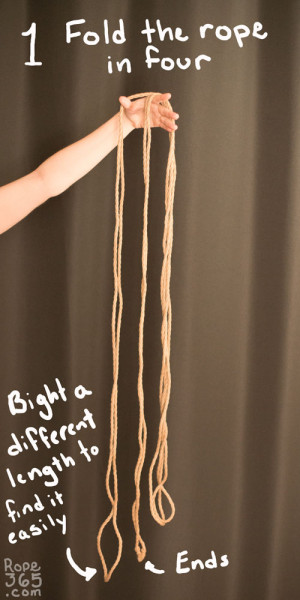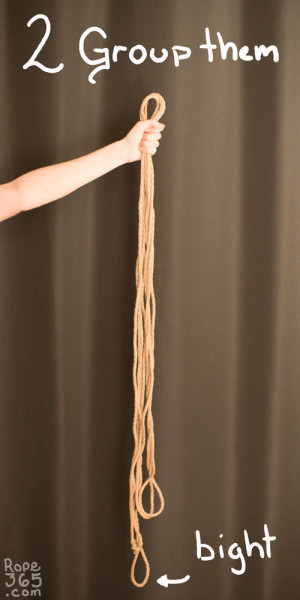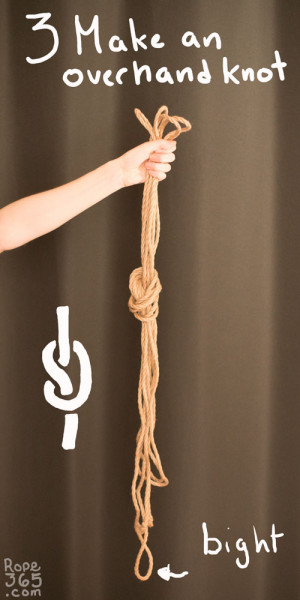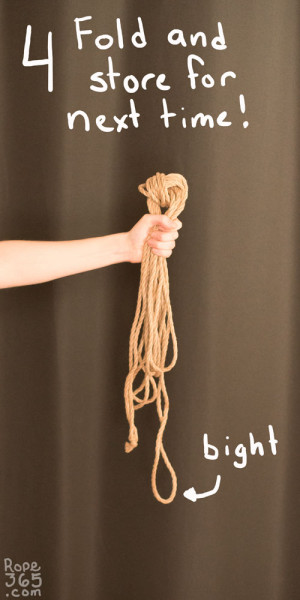Day 7: Coiling
Once we are done tying, it is best to untangle our ropes and store them for the next time. Since we use a tying technique where we start at the bight most of the time, it is good to coil the rope in a way that will keep the bight easy to find.
We start with the overhand hank but there are many other ways to coil rope. Each method has its pros and cons and we will explore more of them in Week 27.
Overhand Hank
The overhand hank coiling method is easy, fast and doesn’t add unnecessary twists and stress on the rope for storage. If you want to be extra gentle with your ropes, you can keep the knot loose. This is a good idea for longer-term storage or more fragile natural rope than kinks easily when kept in a tight knot.
Video Tutorial
Activate subtitles or transcript to view instructions. Please like and subscribe to support the channel. Also available on Vimeo thanks to our patrons on Patreon.
Practice Time
Bundle all your ropes, then uncoil them, find the bight, be ready to tie.
Self-evaluation checklist:
- The knot is pulled and centred so it won’t come undone in transport
- The bight is easy to distinguish from the rest of the rope
Exploration ideas:
- How fast can you coil them?
- Can you coil them in a way that they are all identical?
- How is the coiling different for shorter ropes?
- Do you prefer the bight shorter or longer than the rest of the bundle?
- Does the rope tangle when you uncoil it? How can you prevent this?
Being Tied: To Help or Not to Help? – sansblague
Different people have different rituals when it comes to rope. Some people will want you to keep away from their ropes as long as you are not tied, and others might happily let you untangle or coil their ropes. Get to know the person who tied you by asking if and how you can help.
Inspirations and Resources
Credit: Pictures M/R: Ebi McKnotty P: AlexK7





2020-07-31 at 12:50 PM
I think it would be helpful to note in this section that for long-term storage of natural fiber ropes, like hemp or jute, it’s best to leave that overhand knot quite loose, or use an alternate method (like daisy-chaining or hanging the ropes without any coiling/knotting). Natural fibers have a memory, and if they are left knotted for long periods of time they will be kinky when you go to use them again.
This is not a problem with synthetic ropes.
2023-02-05 at 10:31 AM
Thank you, I’ve added this suggestion to the text.